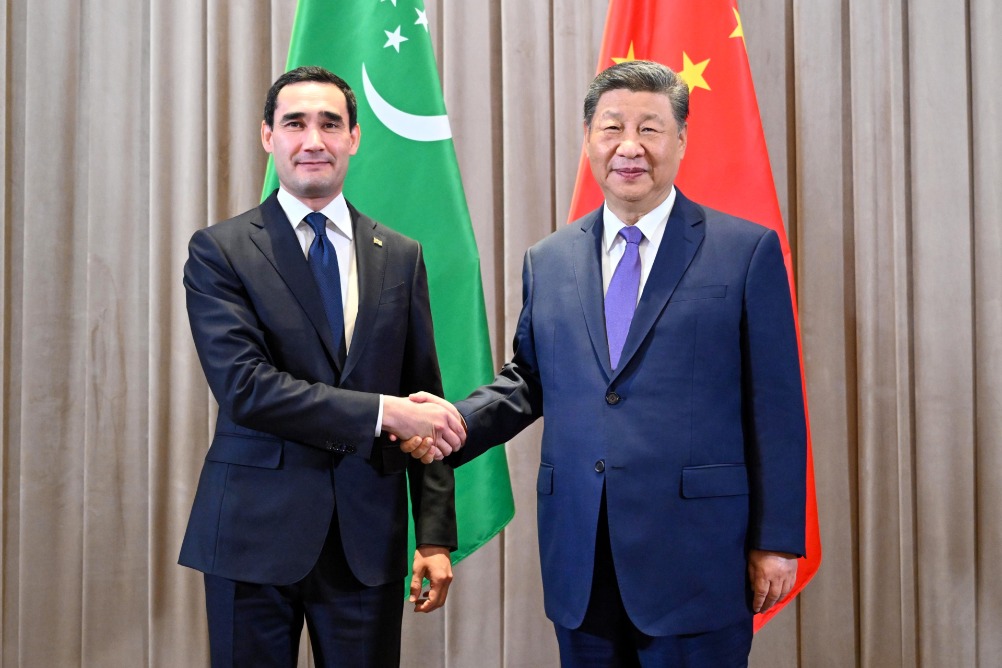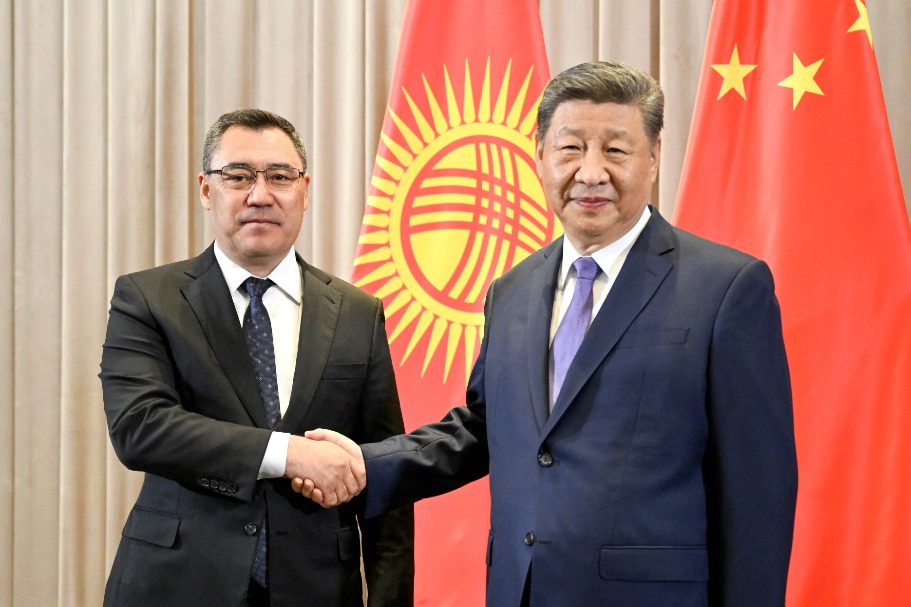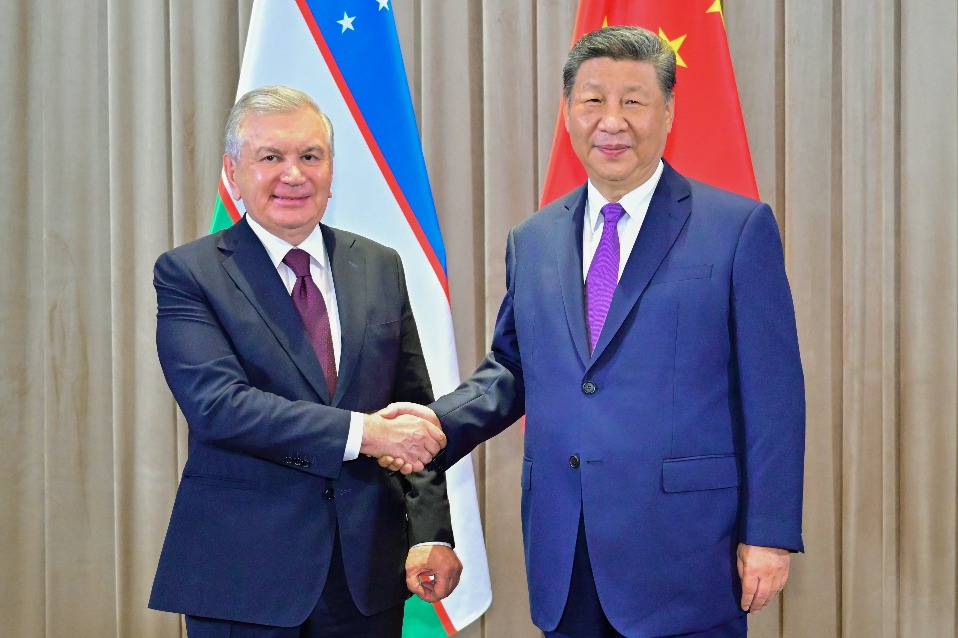Swift results for BRICS
The Kazan Declaration addresses many challenges, including how to counter the weaponization of dollar-based global trade settlement, which trips global prosperity


The 16th BRICS Summit in Kazan, Russia, is the most significant in recent times because it turns BRICS into a more important player in an increasingly unstable world, which is facing tremors from hegemonic sclerosis. At the summit, China advanced solutions to the central issues surrounding cross-border trade settlement.
BRICS member countries are home to 45 percent of the global population, and account for more than one-third of the global economy. The GDP of the expanded BRICS is larger than G7 economies combined.
The Kazan Declaration makes it clear that BRICS is about adhering to the United Nations Charter and removing barriers to global impoverishment, particularly in the Global South. This is consistent with China's Global Development Initiative operating under the umbrella of UN principles. The summit focused on expanding the group's influence in geopolitics, reshaping global trade and finance to reduce transaction risks, and addressing some of the key issues concerning its members and the broader developing world.
Central to any advance in all of these areas is the question of currency convertibility and its role in stabilizing trade relationships. Western media were quick to label this as de-dollarization but this misrepresents the situation.
The US dollar enjoys the exorbitant privilege of being the major reserve currency but that privilege has been widely abused in recent years. There has always been a flavor of arrogance attached to the role of the dollar. "The dollar is our currency, but it's your problem." John Connally, former US treasury secretary, noted when speaking at a 1971 European finance conference.
That attitude has hardened and resulted in the weaponization of the US dollar by using sanctions and manipulation of the exchange mechanisms. These changes undermine the global trade environment. The BRICS summit responded to three risks.
The first risk is the weaponizing of the SWIFT settlement system. Many believe this is possibly the biggest foreign policy mistake the US has ever made because it restricts countries' choices and forces countries to explore alternative means of trade settlement.
Over 120 countries count China as their major trading partner. The "BRICS Pay" proposal will help facilitate trade between China and these countries, allowing them to use alternative currencies for trade settlement outside of the SWIFT system. This will increase reliability and reduce geopolitical risks in global trade.
The decision not to renew the petrodollar arrangement where oil was traded only in US dollars, reflects this growing unease with the dollar's weaponization. The BRICS grain exchange will expand to include other commodities, enabling trade in national currencies. BRICS nations are massive commodities producers so, as with the demise of the petrodollar, this has a significant impact in terms of the dollar's stranglehold on global commodities trading.
The weaponization of the SWIFT system comes when the US revokes a bank's license or puts it under sanctions to prevent it acting as a co-respondent bank and stopping access to US dollars. Trade settlement is stymied for political reasons.
The BRICS meeting provides alternatives to countries that are biased by the existing global trade settlement system. In late October, China hosted the SWIFT International Banker's Operation Seminar, bringing together leaders from finance, technology and policy. The meeting demonstrated China's commitment to further integrate itself into the global financial system. The BRICS proposals capture a desire to further de-risk trade settlement by providing alternative mechanisms.
The second, but unspoken, risk addressed by BRICS comes from US actions to freeze, confiscate, or steal sovereign assets. This growing risk underpins some of the most important outcomes in the Kazan Declaration supporting an independent mechanism for cross-border trade settlement.
Concerns about this risk were confirmed when the EU decided to use seized Russian assets to fund Ukrainian reconstruction. This action followed the earlier freezing of Venezuela's reserves in the United States and the United Kingdom. Both actions are examples of sovereign-initiated theft by institutions previously considered to be immune from political interference. This accelerated the move toward de-dollarization of the global economy.
As the second-largest foreign holder of US debt, China has steadily reduced its US Treasury holdings over the past 11 years, from a peak of about $1.32 trillion in November 2013 to approximately $768 billion in May 2024. This gradual reduction reflects a strategic shift in China's economic and geopolitical risk management rather than a push for de-dollarization.
As a leader in digital innovation, China is well positioned to provide an alternative trade settlement framework built on advanced blockchain capabilities. China is at the forefront of fintech development, with companies like Ant Group and Tencent revolutionizing digital payments.
China has pioneered the development of central bank digital currencies. These will reshape global payments by reducing transaction costs, and providing an alternative to the dominance of the US dollar in international trade settlement.
The third risk addressed in the Kazan Declaration reflects concerns with the way the US is unilaterally imposing sanctions all over the world. Neither of the US presidential candidates gives any indication of stepping back from the use of unilateral sanctions which are designed to hinder the global trade settlement system and achieve domestic US policy objectives. This is an abuse of the exorbitant privilege afforded to the dollar as a reserve currency.
The Kazan Declaration addressed many other issues but the commitment to the "BRICS Pay" concept is the most significant because it opens the gate to a fairer and non-exploitative cross-border trade settlement mechanism. These solutions are required to counter the weaponization of dollar-based global trade settlement based on the inherent belief that what is good for America is good for the world. This attitude has hampered progress toward global prosperity by entrenching disadvantages in trade settlement in the Global South. The "BRICS Pay" proposal, combined with China's advanced digital solutions, holds the promise of a genuine swift and fairer trade settlement system.

The author is an international financial technical analysis expert and a former national board member of the Australia-China Business Council. The author contributed this article to China Watch, a think tank powered by China Daily.
Contact the editor at editor@chinawatch.cn.

































